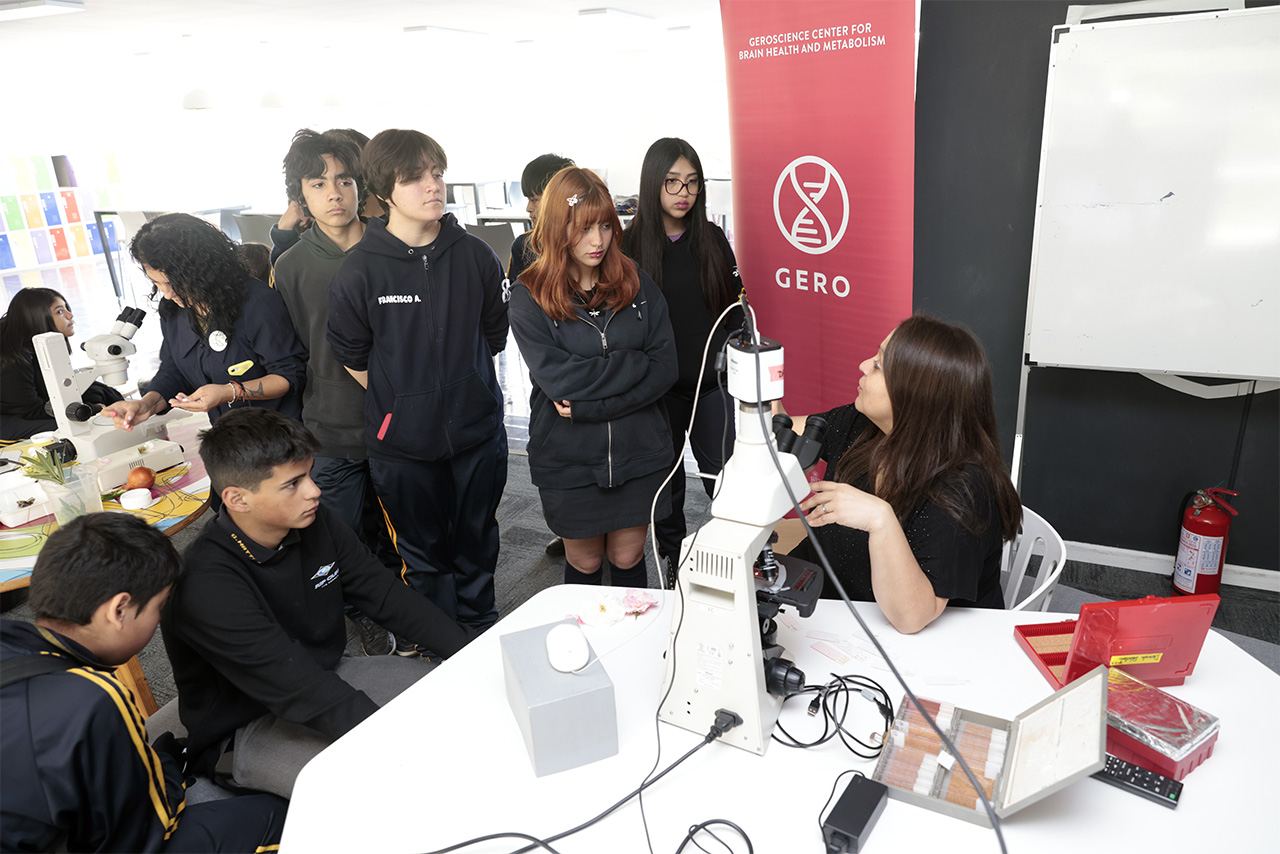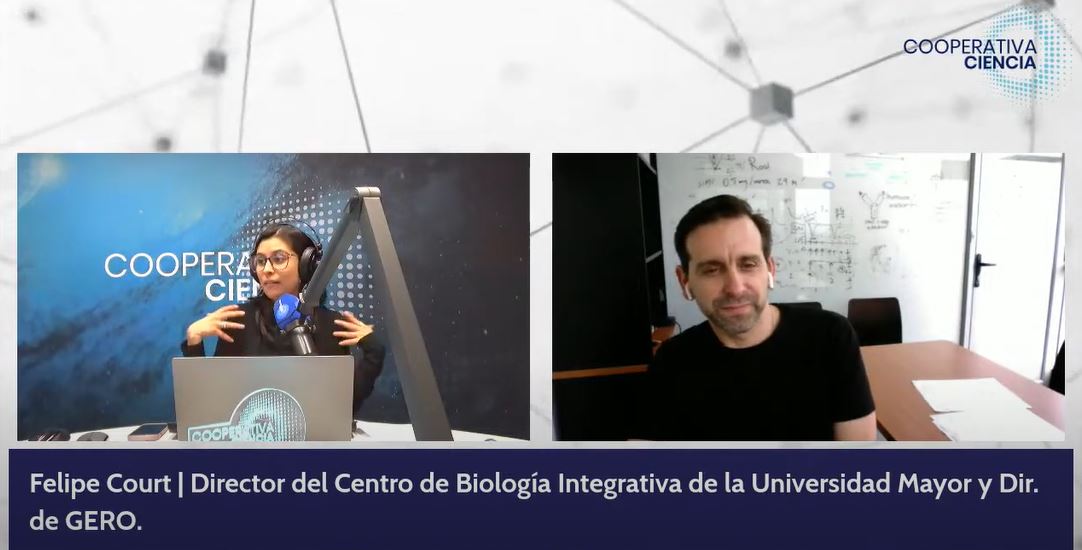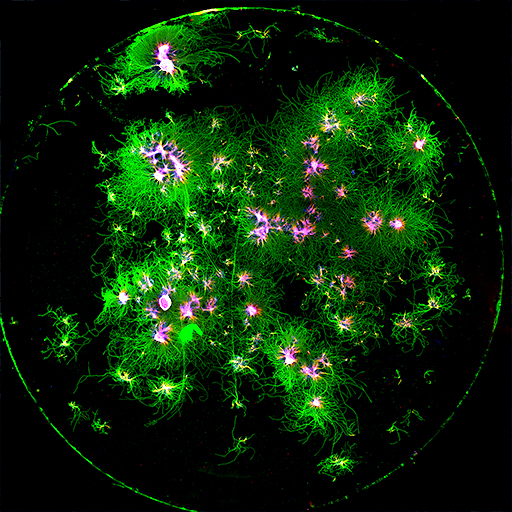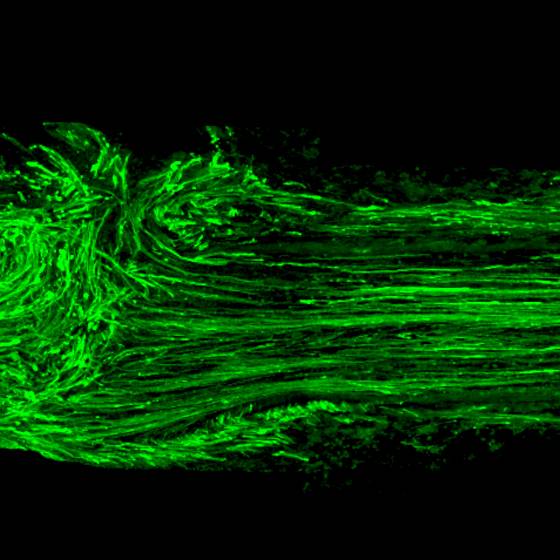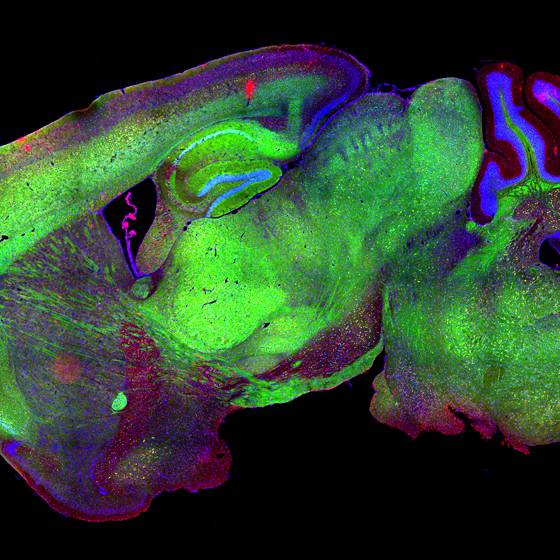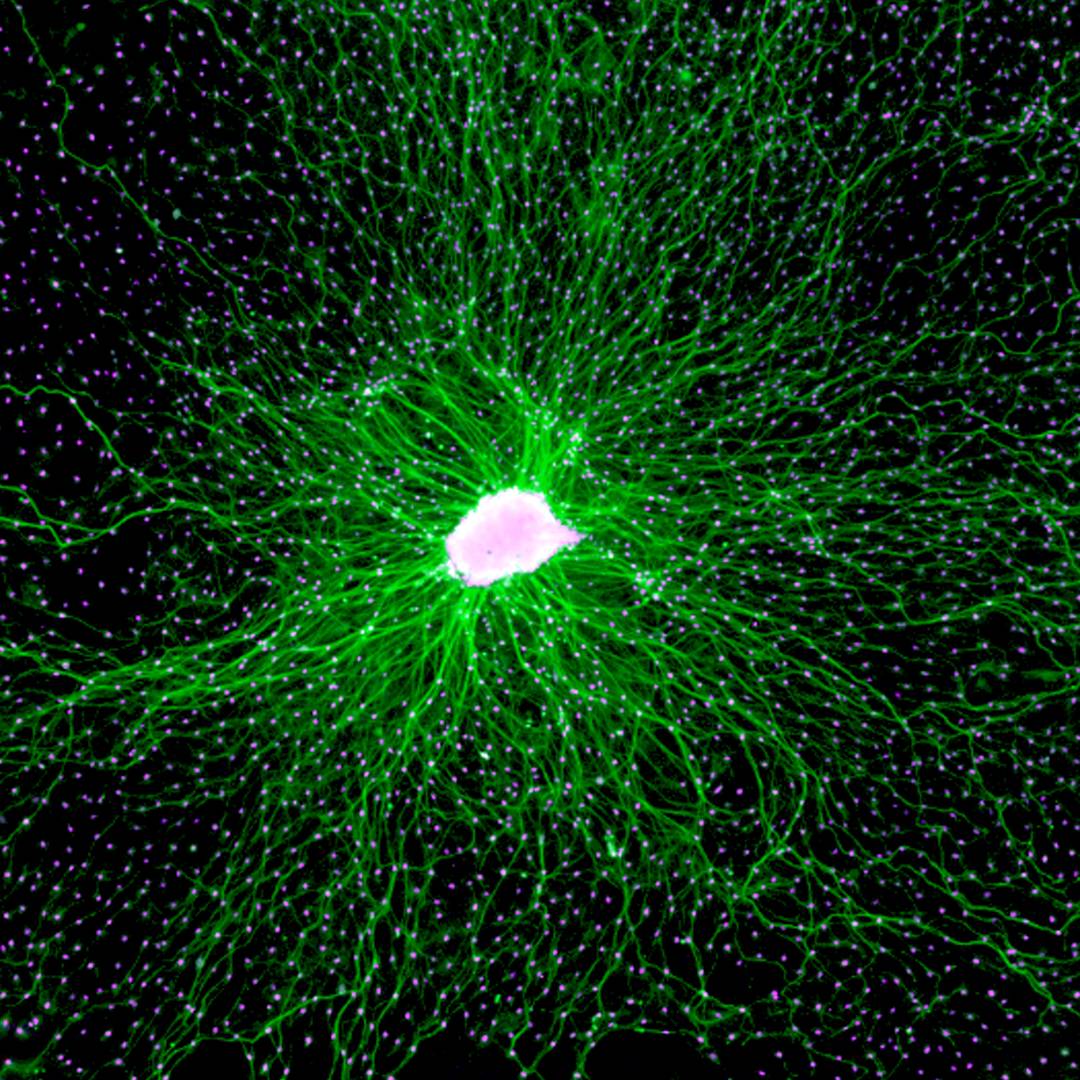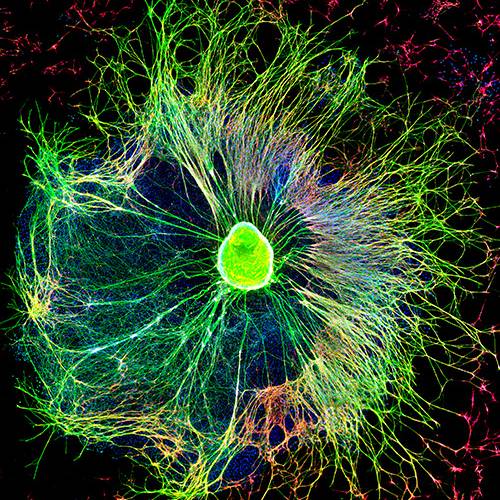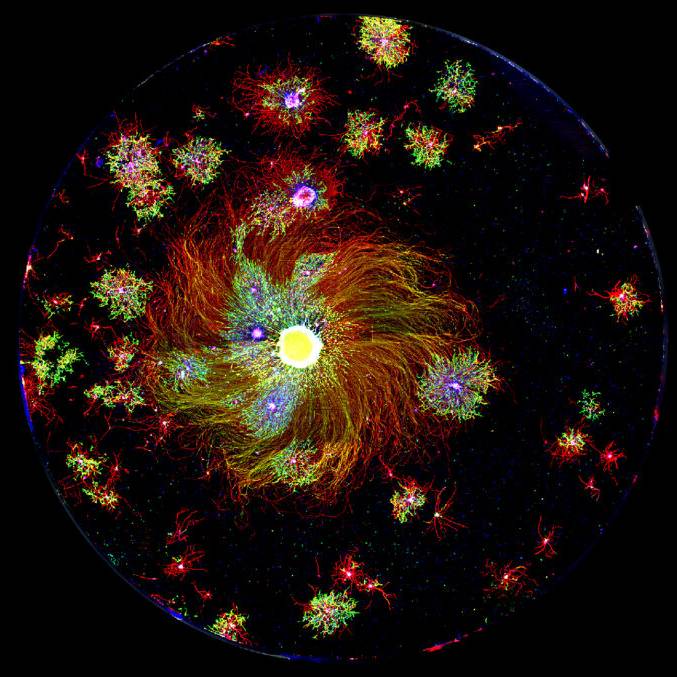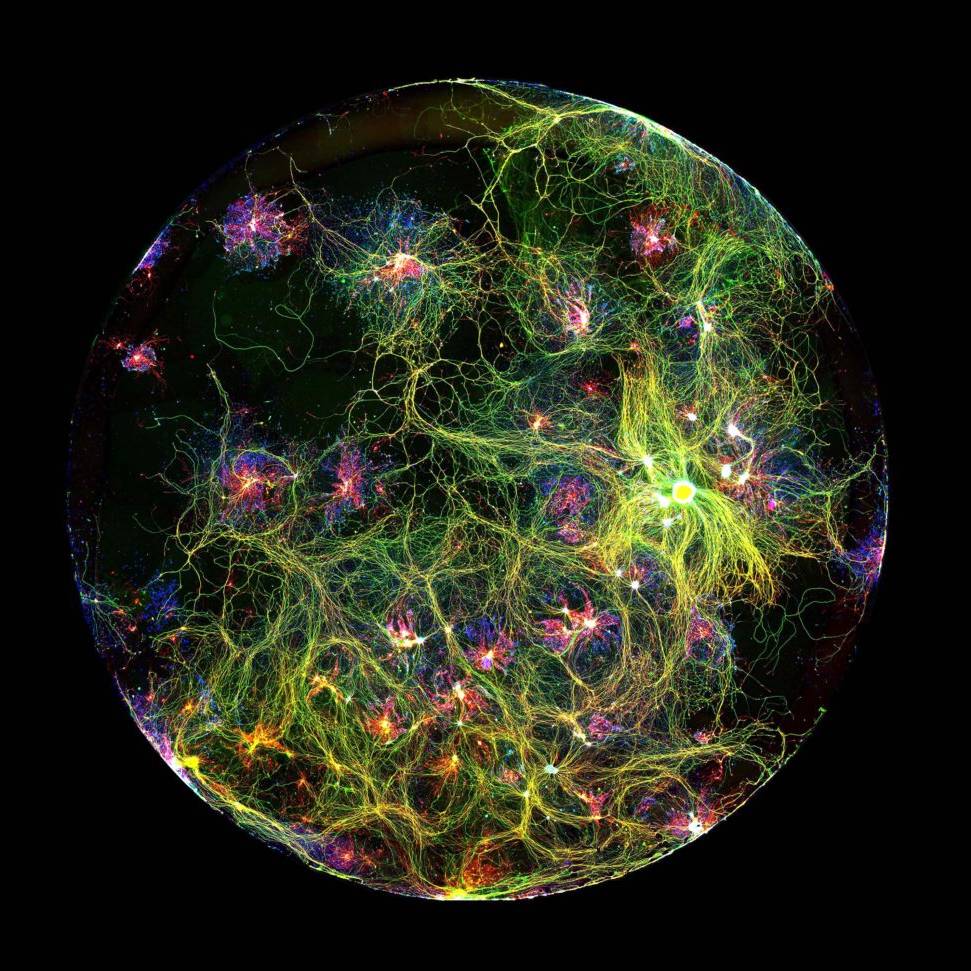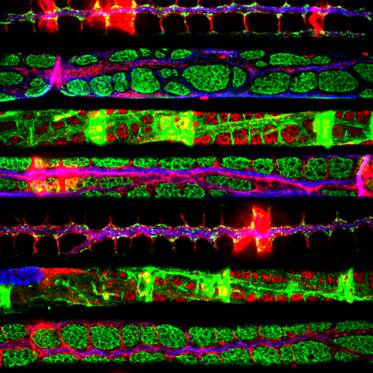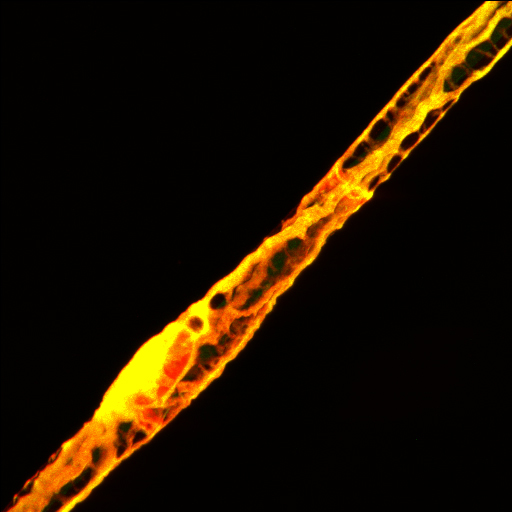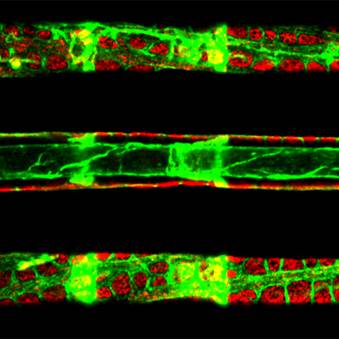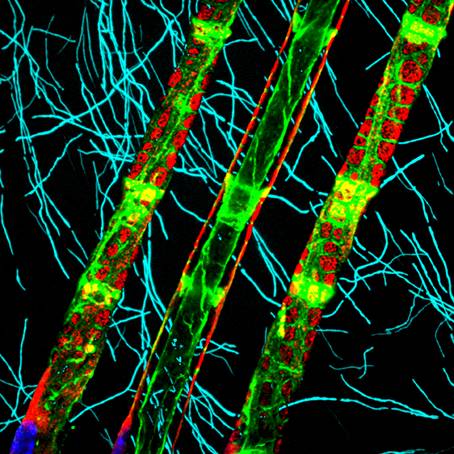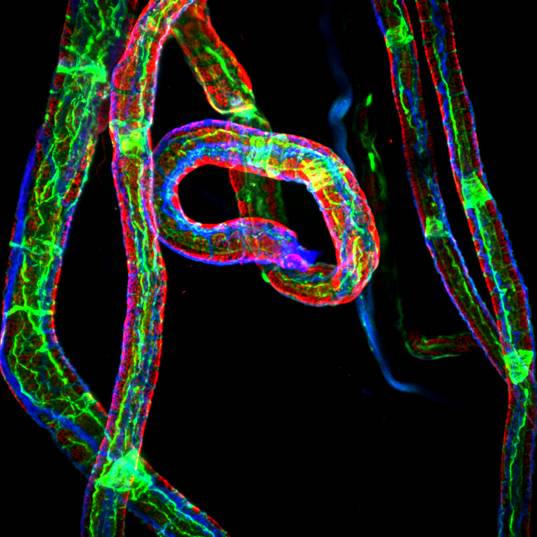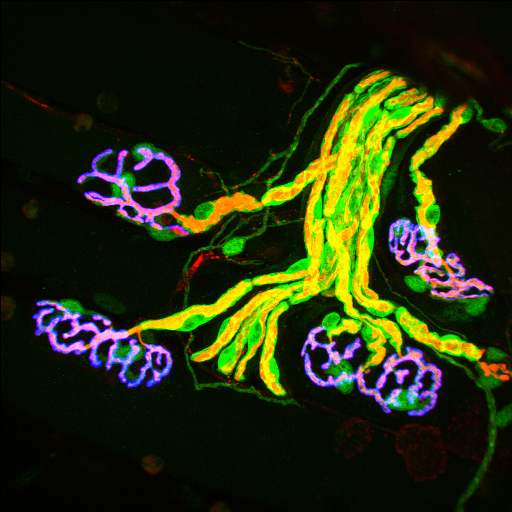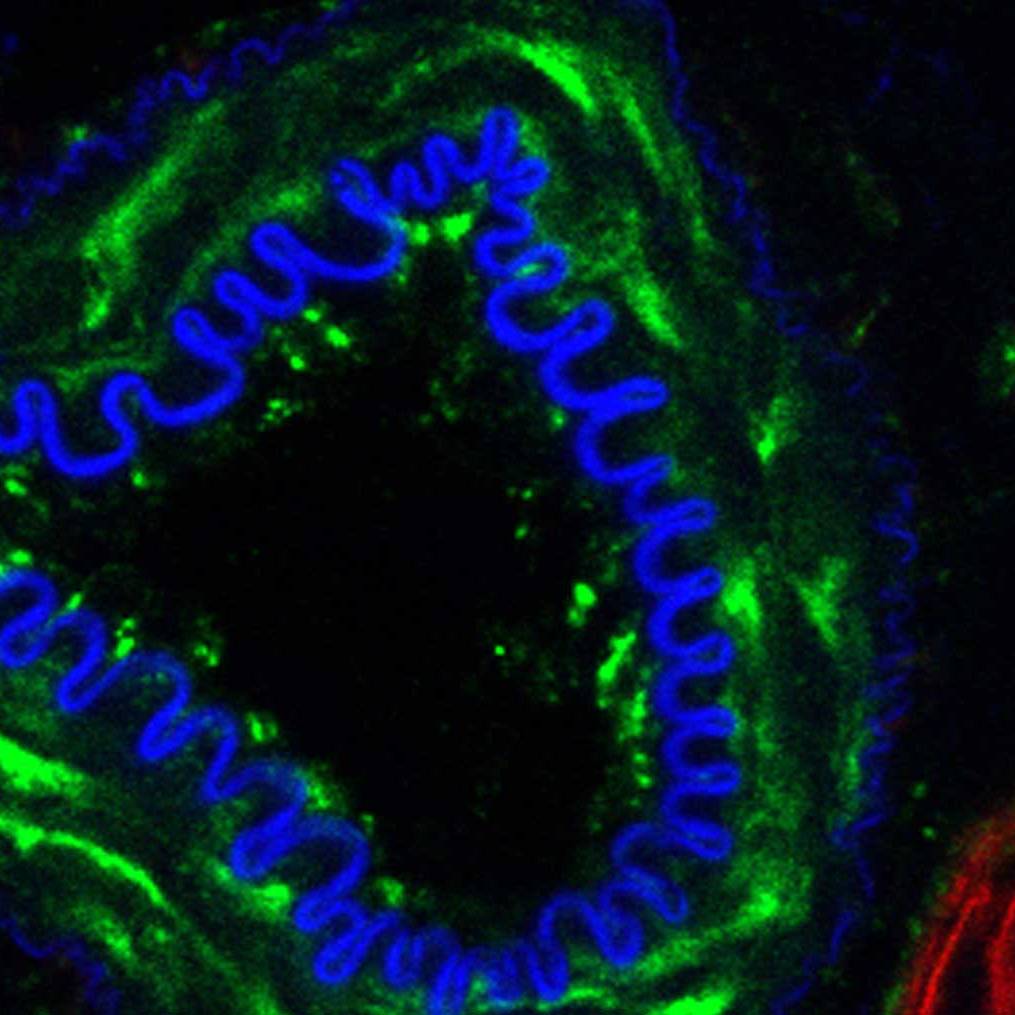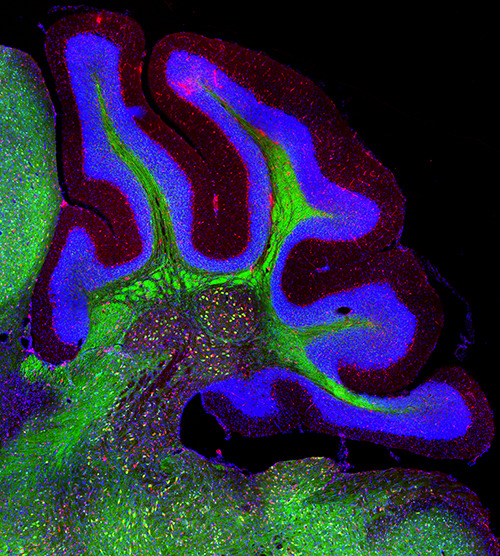Understanding brain aging for neuroprotective strategies
Aging represents the most important risk factor for the development of neurodegenerative diseases. As life expectancy is increasing and birth rate decreasing, the world’s population is getting older at an unprecedented rate. It is estimated that by 2050, approximately 17% of the global population (1.6 billion) will be aged 65 and over. Unfortunately, the fact that people are living longer has translated into an increase in chronic diseases, including neurodegenerative diseases in the population, with enormous social and economic consequences. Most neurodegenerative conditions for which age constitutes the most important risk factor, including Alzheimer’s disease and Parkinson’s disease, have no cure yet and treatments only modestly decrease symptoms, without a significant delay in the progression of neurodegeneration and the associated functional impairment.
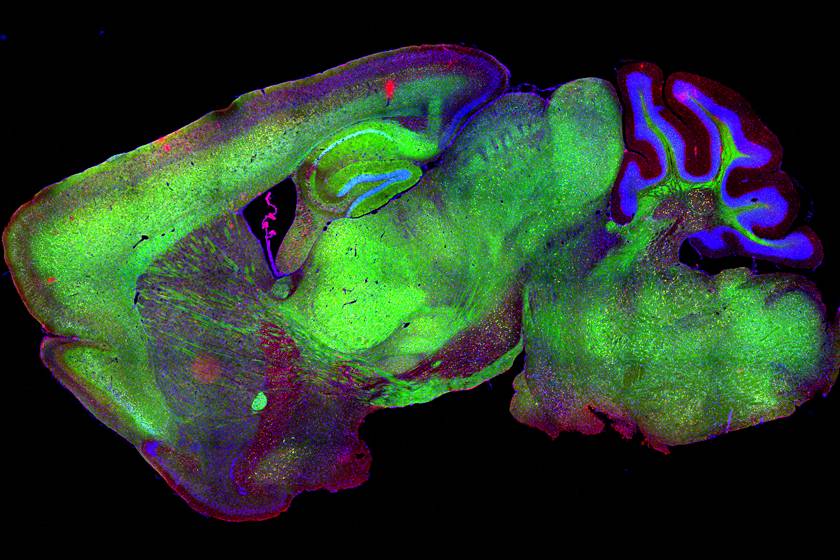
Sagittal section of mouse brain expressing YFP in neurons (green) and stained for a microglial marker in red and cell nuclei in blue.
Searching for novel Geroprotectors
Using in vitro and in vivo models, we study changes in neurons and glial cells along aging. By combining several techniques, including deep proteomic analysis, biomarker detection, microscopy and behavioral analysis, we have discovered the activation of neurodegenerative pathways which can be targeted by genetic and pharmacological approaches. Using biomedical models of brain aging, we have shown that systemic interventions in already aged mice are capable to revert age-associated hippocampal changes, restoring synaptic function, and leading to reversal of learning and memory capacity to youthful levels. In addition to systemic pharmacological interventions, we are also studying the impact of physical activity in brain function, to identify molecular mediators in the muscle-brain axis with neuroprotective effects.
People involved
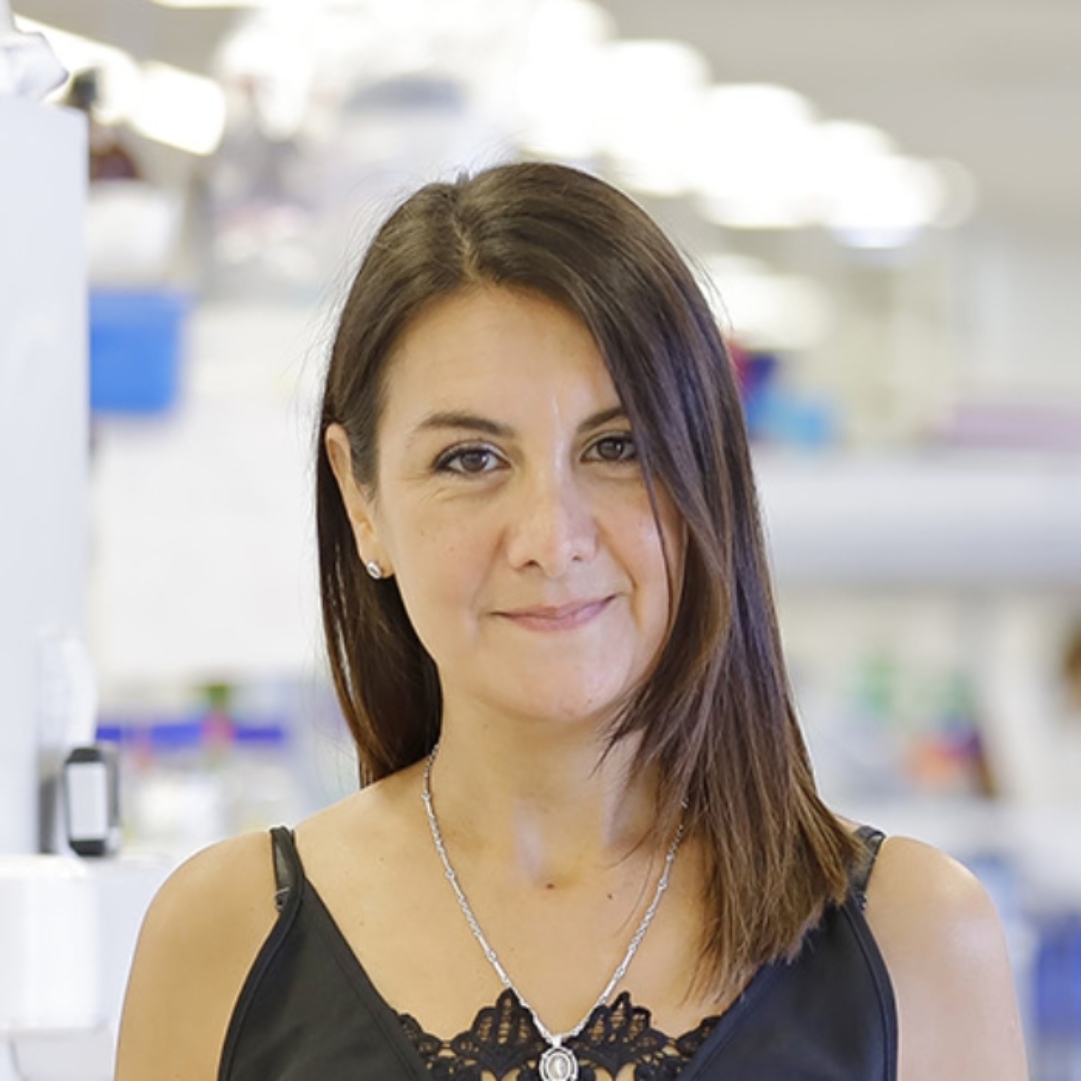
Macarena Arrazola
PI collaborator

PhD in Biological Sciences from the Catholic University of Chile. Studying the contribution of necroptosis in the age-associated axonal degeneration of the hippocampus, and the impact of using pharmacological approaches to revert neuronal dysfunction and cognitive impairment during aging, proposing necroptosis as an attractive target for the future development of geroprotective tools to treat age-related disabilities.

Daniela Rebolledo
Senior Research Assitant

I am a Biochemist from Pontificia Universidad Católica de Chile (PUC) and PhD in Cell and Molecular Biology from the same university. My PhD thesis research was performed at the Physiology and Biophysics department, University of Washington. My research has focused on the physiology of the neuromuscular system and the pathological mechanisms behind neuromuscular disorders of diverse etiology.

Karina Girardi do Carmo
Postdoctoral fellow

Biologist, Ph.D., and MSc in Cell and Molecular Biology from Oswaldo Cruz Foundation (Fiocruz/RJ). Studying age-dependent decline of regenerative capacity in the peripheral nervous system. Mainly focusing on the contribution of metabolic profile of aging Schwann cells in senescence and particularly exploring the epithelial-mesenchymal transition (EMT) like process.
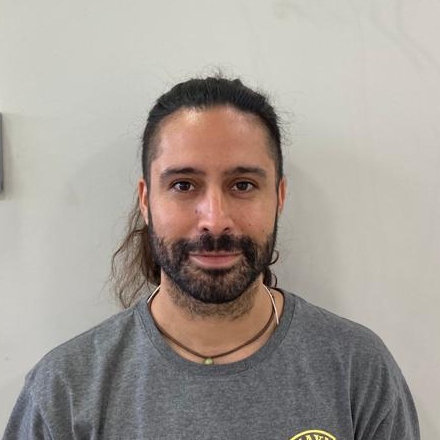
Felipe Véliz Valverde
PhD Student

Msc Neuroscience. Neurobiology PhD student at Universidad Mayor. I´m interested in understand the beneficial effects of exercise on brain function and behavior in aging. Skeletal muscle can crosstalk with other organs by myokines or exerquines. Some of them can cross the blood brain barrier and reach the brain, triggering neuroprotective effects. The aim question of my work is wheater some exerquines have an effect on axonal degeneration.
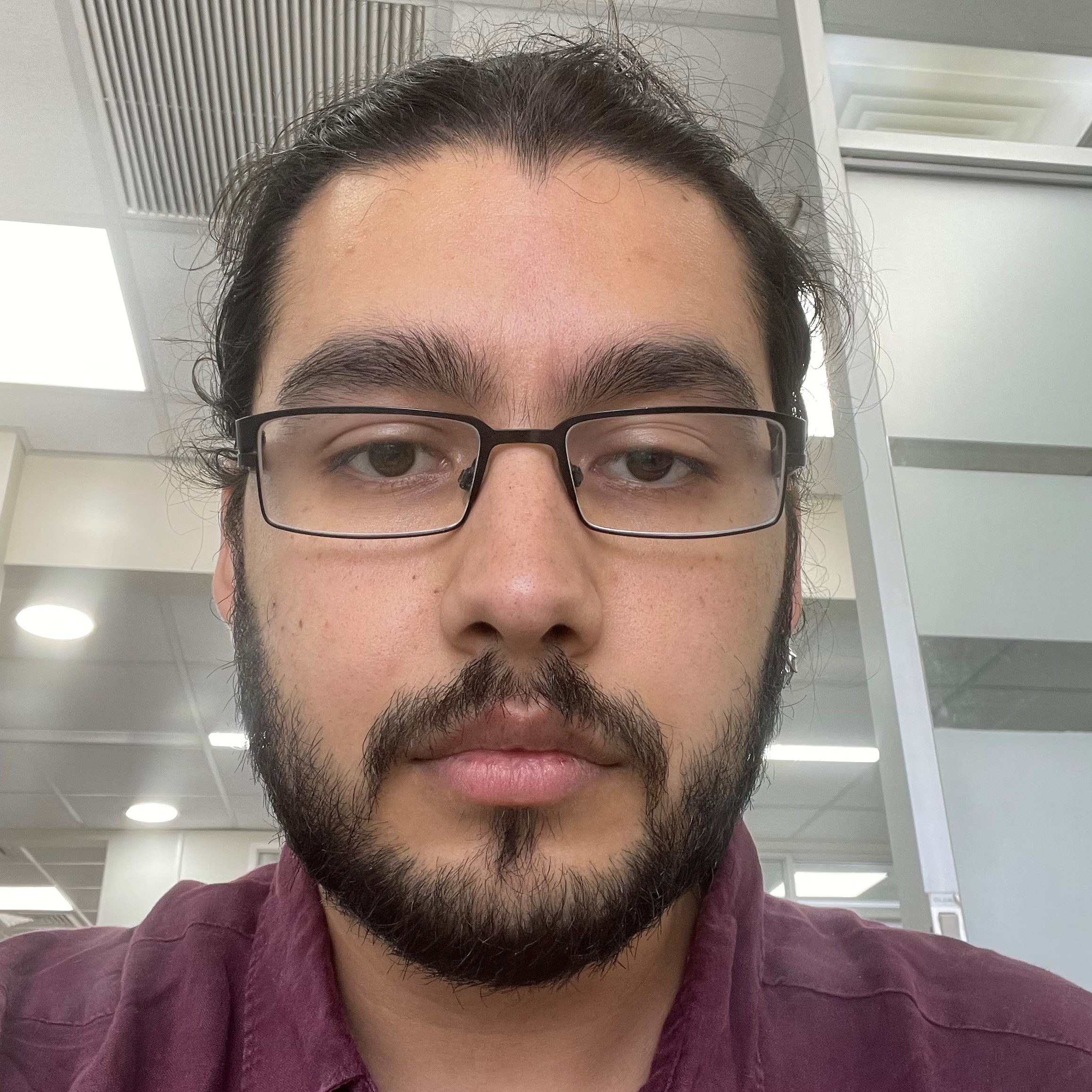
Rodrigo Leiva
Research Assitant

B.Sc(hons) degree in Neuroscience from the University of Glasgow and M.Sc in Integrative Neuroscience from the University of Edinburgh. I’m currently working on the role of axonal necroptosis and inflammation in the dopaminergic neurons of the nigrostriatal pathway in Parkinson’s Disease to assess it as a potential therapeutic target through the inhibition of RIPK3.
Related Publications
junio 3, 2022
Multiple events case–control study in a prospective cohort to identify systemic, cellular, and molecular biomarkers of obesity‑induced accelerated aging in 30‑years‑olds: the ObAGE study protocol
Correa‑Burrows P, Burrows R, Albala C, Court FA, Salech F, Sanhueza G and Gonzalez‑Billault C.
PMID: 35501766
marzo 24, 2022
Aβ oligomers trigger necroptosis-mediated neurodegeneration via microglia activation in Alzheimer’s disease
Natalia Salvadores, Ines Moreno‑Gonzalez, Nazaret Gamez, Gabriel Quiroz, Laura Vegas‑Gomez, Marcela Escandón, Sebastian Jimenez, Javier Vitorica, Antonia Gutierrez, Claudio Soto and Felipe A. Court.
PMID: 35264247
noviembre 25, 2021
Necroptosis inhibition counteracts axonal degeneration, cognitive decline and key hallmarks of aging, promoting brain rejuvenation.
Macarena S. Arrázola, Matías Lira, Gabriel Quiroz, Somya Iqbal, Samantha L Eaton, Rachel A Kline, Douglas J Lamont, Hernán Huerta, Gonzalo Ureta, Sebastián Bernales, J César Cárdenas, Waldo Cerpa,Thomas M. Wishart, Felipe A. Court
bioRxiv doi: https://doi.org/10.1101/2021.11.10.468052
octubre 7, 2021
Enhanced Activity of Exportin-1/CRM1 in Neurons Contributes to Autophagy Dysfunction and Senescent Features in Old Mouse Brain.
Gorostieta-Salas E, Moreno-Blas D, Gerónimo-Olvera C, Cisneros B, Court FA, Castro-Obregón S.
Oxid Med Cell Longev. 2021 Aug 13;2021:6682336. doi: 10.1155/2021/6682336. eCollection 2021.
PMID: 34434486
Related News
Del laboratorio a la sala: académicos realizan charlas y talleres para acercar la ciencia a escolares
noviembre 28, 2023
Los centros de investigación de la Universidad Mayor se vinculan con colegios de Santiago y otras regiones, entregándoles contenidos de manera didáctica y simple y una experiencia formativa en que…
Descubren rol clave de células que impiden reparar daños al sistema nervioso perférico.
noviembre 15, 2023
Descubren rol clave de células que impiden reparar daños al sistema nervioso periférico Conversación en Cooperativa Ciencia con Felipe Court, Doctor en Neurociencias, director del Centro de…
